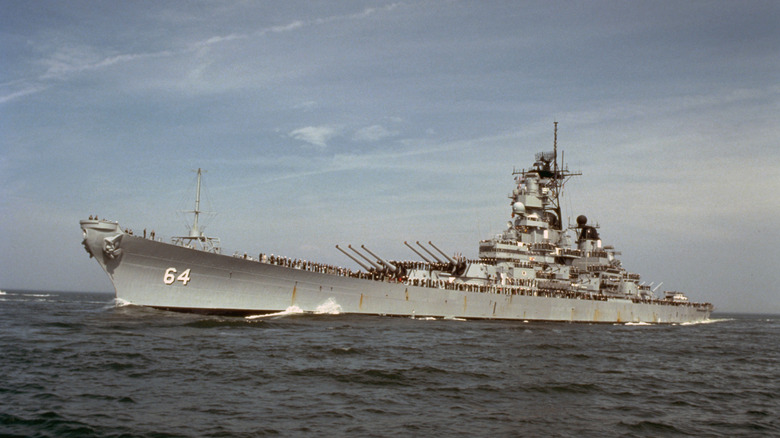Why Does The Crew On A Navy Ship Line The Deck While Leaving Port?
During special occasions, the crews aboard naval ships assume a unique formation and line the deck, a tradition known as "manning the rails". This tradition is deeply rooted in naval history and is a show of respect and camaraderie. The origin of the practice dates back hundreds of years, well before ships stopped using sails. It's from a tradition called "manning the yards," where crew members would stand on the ships' yards, which are the arms on the masts which hold the sails, as a show of respect. It was to honor those aboard and officials and dignitaries waiting in the port. To this day, it serves the same symbolic purpose.
The formation is far more than just a show, it's a salute steeped in tradition used for various occasions, from memorials to paying respect to the President and visiting foreign ports. This shared ritual is a symbol of respect, discipline, an unity, especially when ships pass by historic places like the USS Arizona Memorial at Pearl Harbor. It serves as a constant reminder to sailors, and those watching, of the Navy's history.
Manning the rails unites naval service members around the world through a long-standing tradition, be it paying respects to the past or the beginning of a new mission. Each time a ships departs or arrives represents a unique and memorable event thanks to this simple act.
Honoring the past and strengthening diplomacy
Manning the rails isn't just a fancy display; it's a naval tradition steeped in history and official Naval rules. The U.S. Navy uses this formation to pay respects during events like commissioning ceremonies, returns to port after deployments, and memorial events. Sailors in full dress uniforms line the deck in silence and face outward to show respect for those on shore or for historical sites they pass.
This tradition is also used as a show of diplomacy. When a ship enters a foreign country's port, it will often man the rails as a gesture good will without needing to exchange words. Allied navies may do the same in return, creating a silent but powerful exchange of respect. It's a long-standing example of naval tradition that transcends language and culture. Even the deadliest warships in history took part.
In addition to being used during ceremonies, it exemplifies the respect for history that the Navy embodies. Regardless if sailors are fresh recruits or experienced veterans, it allows them to be a part of a legacy that dates back hundreds of years. The feeling of being part of something bigger is, and always has been, a morale boost for members of the Navy.
A powerful image of purpose and unity
There are many pictures of sailors manning the rails that are both visually striking and emotionally evocative. Seeing hundreds of sailors standing still, in unison, along the sides of a warship highlights the discipline, pride, and a sense of belonging that sailors embody. It's a moment in time when tradition, professionalism, and serving the people all come together.
It's also a very personal moment for the sailors. Taking part in the ritual is a rite of passage and reminds them of their part in a bigger mission. This ceremony takes them out into the open, both literally and figuratively, unlike most of naval life, which happens behind high-tech military weapons and inside ships. It's a connection to their ship, their crew members, and all the time they have spent in service.
For the spectators and family members on land, it's a heartfelt goodbye or a warm welcome home. No matter where you watch it from, the act of manning the rails serves as reassurance that the brave sacrifices of those part of the naval service shall never be forgotten.


